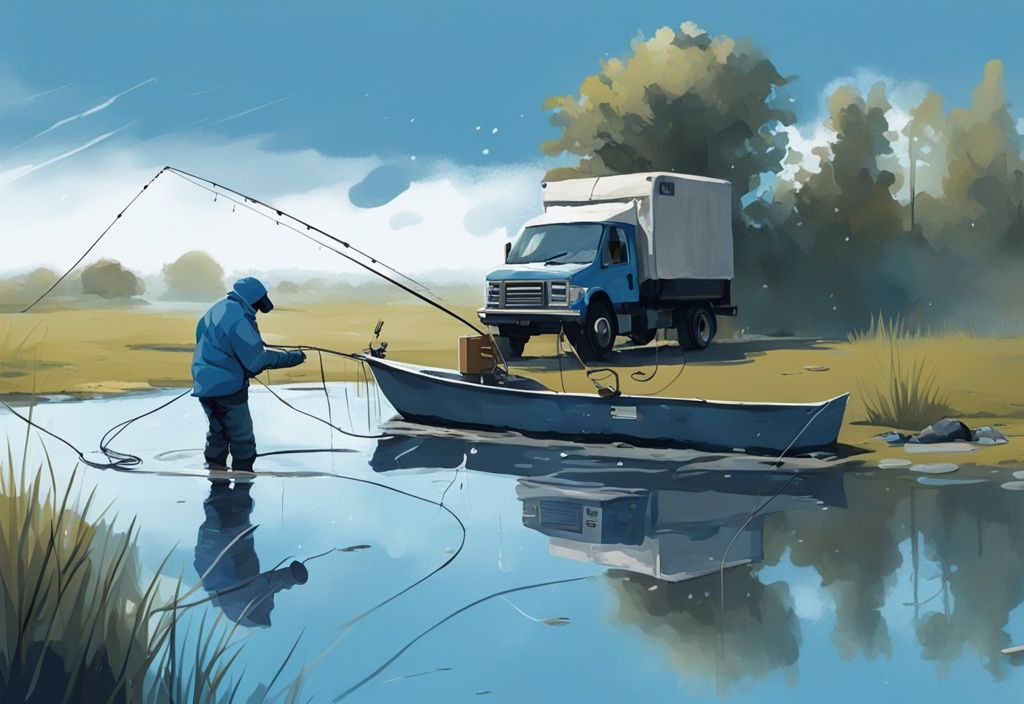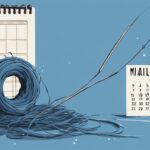Ever wondered why fishing after rain makes the fish go wild? It’s like all the fish flock to your bait as if it’s some kind of grand feast! The truth, kind folks, is more fascinating than you might think. Increase in food sources and cooler temps turns the post-rain scene into a feeding frenzy. And yet, the murky waters and swirling currents can throw a lot of us for a loop.
But don’t worry, ol’ Jake’s got your back. I’ll be dishing up some never-fail strategies and handy tips, to wrangle these opportunities into the catch of the day.
So, let’s unravel the mystery together and make every rainy day ends with a story worth telling. Lip-rattling strikes after a downpour, anyone?
What Makes Fishing After Rain More Successful?
The Role of Increased Fish Activity After Rain
Fish tend to become significantly more active after rain, primarily because they venture out of their shelters to hunt for food. Picture this: rain washes various food sources like insects and worms into the water, triggering feeding frenzies. It’s like an all-you-can-eat buffet for the fish. The cooling effect of the rain on the water temperature, especially in the scorching heat, wakes them up and makes them ready to bite.
What’s better? With fewer anglers willing to brave the rain, there’s less competition. The fish are less wary, so your odds of a successful catch skyrocket. Can you imagine the thrill of reeling in that big one while others stay dry at home?
Changing Pressure Systems: An Overview
Barometric pressure is a game-changer in fishing. Low pressure systems, often accompanying rainy weather, make fish go into a feeding frenzy. They sense the change and become more aggressive as if they know a storm’s brewing. Falling pressure marks the golden period—a storm’s on its way, and the fish are ready to feast.
On the flip side, stable and rising pressure doesn’t give you the same advantage. The fish stick to their regular feeding patterns, making them predictable but less frenzied. It’s a bit like trying to catch a fish that’s just had breakfast—doable, but not as exciting.
Understanding the Impact of Enhanced Oxygen Levels and Aeration
Rainwater ushers in increased oxygen levels, and fish absolutely love it. This boost in aeration makes fish that are high-energy feeders, like bass and mackerel, go into overdrive. The rain stirs up the water, enriching it with oxygen, which incites aggressive feeding behavior.
Think about it: more oxygen means more energy, and more energy means more action. It’s no wonder fishing after rain is so productive – the fish are basically turbocharged.
Cloud Cover and Reduced Light: Their Advantages
Cloud cover that comes with rain creates an overcast sky, which many fish species adore. The reduced light makes them feel less exposed and more willing to leave their shelters. Predatory fish, in particular, thrive in these conditions. They take advantage of the low visibility to ambush their prey, making them more active.
Fishing after rain, with the skies all gray and promising, could turn into one of your best fishing days. Your catch rates often soar under these ideal conditions, making every cast an exciting possibility.
Environment-Specific Effects of Rain on Fishing
Fishing after rain presents unique challenges and opportunities across different water bodies. Understanding these environment-specific effects can help you adapt and increase your chances of a successful fishing trip. Let’s explore how rain impacts creeks, rivers, lakes, ponds, and saltwater conditions.
How Rain Affects Fishing in Creeks and Rivers
When fishing after rain in creeks and rivers, you often face tough conditions. High water levels and faster currents can make it feel like the fish have vanished. Picture the creek you know so well – now it’s a muddy torrent. Fish scatter from their usual hiding spots, disoriented by the rapid flow. The water’s murkiness doesn’t help either; it’s hard for fish to spot food, let alone your bait.
So, what’s the plan? Patience. Wait a bit for the water to calm down. As sediment settles, visibility improves, and fish return to their normal habits. Suddenly, you’re not battling the elements – you’re back in your element.
Rain and Its Influence on Lakes and Ponds
In lakes and ponds, fishing after rain can be a game-changer. The storm seems to wake up the fish, drawing them to the surface. That’s where you get to see some topwater action. But, avoid those muddy inflow areas; fish tend to dodge these spots because of poor water quality.
To capitalize on this post-rain rush, grab your poppers and buzz baits. These lures mimic prey disturbed by the rain, making them irresistible to fish. By targeting the clearer parts of the lake or pond, you’re setting yourself up for some thrilling bites.
Saltwater Fishing: Rain Considerations
Saltwater fishing after rain? Now that’s a different beast. The influx of freshwater can mess with the salinity levels, and that directly impacts fish behavior. Usually, you’ll find fish less active and harder to tempt. Think of it as a rain-induced siesta.
Keeping an eye on salinity levels is crucial. Focus on areas away from freshwater runoff where salinity is stable. That’s where you’ll find the fish more likely to be on the move. Adjusting your strategy based on these changes can make all the difference in turning a slow day into a rewarding one.
Practical Techniques for Fishing After Rain
A Guide to Spot Selection Post-Rain
After a rain, certain spots become prime locations for fishing due to the changes in the water environment. Areas near shorelines, structures, and runoff points tend to be particularly productive. These zones are often rich with nutrients and attract fish searching for food.
Focusing on deep, muddy areas with ample food sources can yield great results. The disturbances caused by rain create a natural draw for fish like bass and catfish that enjoy foraging in these conditions. Additionally, looking for runoffs and spillways is essential. These areas carry nutrients and prey into the water, quickly becoming feeding hotspots for various fish species.
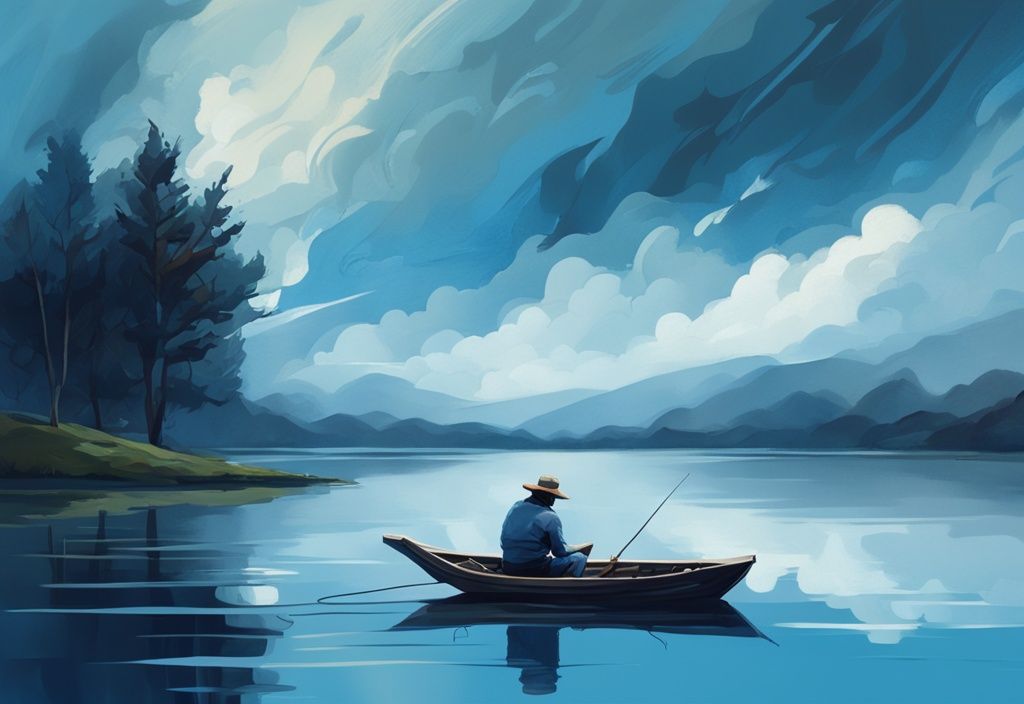
Tailoring Your Fishing Tactics After Rain
Fishing after rain requires a slight adaptation in tactics to match the new conditions. Natural baits like live worms and insects work exceptionally well as rain often washes these into the water, making them familiar and enticing to fish.
When choosing lures, consider those that mimic washed-in prey. Soft plastics and crankbaits can be particularly effective in these scenarios. It’s also wise to target shady areas, which fish find more comfortable post-rain, and avoid overly muddy inflows where visibility is significantly reduced.
Pre-Rain Preparation Tips
Proper preparation before rain can make a significant difference in your post-rain fishing success. Monitoring upcoming weather patterns ensures you can plan a safe and productive trip. Packing proper rain gear, such as waterproof clothing and sturdy boots, will keep you comfortable.
Ensure your fishing equipment is in good condition to handle the wetter conditions. Being ready to adjust your tactics quickly is crucial; prioritize safety and opt for darker lures that can offer better visibility in the more turbid water that often follows rain. This proactive approach helps you stay prepared and maximizes your chances for a successful fishing experience.
How Barometric Pressure Influences Fishing Success
Effects of High, Medium, and Low Pressure Systems
Barometric pressure plays a crucial role in determining fish behavior, directly affecting the success of fishing after rain. High pressure systems often bring clear skies and slower fishing activity. Fish tend to seek out deeper water spots where they feel safer. These clear and stable conditions result in wary fish, making it challenging for anglers who will need to use more subtle techniques to find success. Dive into those deeper water columns and be patient; the rewards are there for those who persist.
When it comes to medium pressure systems, you’ll find fair weather and balanced fish behavior. This scenario is perfect for experimenting with various techniques. Fish might neither be too deep nor too shallow, so using a mix of surface, mid-water, and deep lures can be quite effective. This approach provides ample opportunities to catch fish as you adapt to their tentative feeding patterns.
Low pressure is commonly linked to cloudy or rainy conditions, reducing underwater visibility. However, these conditions actually make fish more adventurous in their feeding, often congregating in deeper or sheltered areas where they feel protected. Focus your efforts on these zones, using lures and baits that can attract fish even in low visibility environments. This phase can be especially productive, so don’t miss out.
Understanding Rising, Stable, and Falling Pressure
Understanding how barometric pressure changes can dramatically improve fishing after rain. Rising pressure signals the end of a weather system. Fish remain active but tend to retreat to deeper waters as they sense the pressure increase. During this time, using deep-diving lures and focusing on bottom structures and drop-offs can be highly effective.
Stable pressure suggests standard weather with no significant changes impacting fish behavior. Here, fish follow regular feeding patterns, so you don’t need to make drastic adjustments. Tried-and-true techniques work well, and you can rely on your go-to lure choices and baits to provide a consistent fishing experience.
Falling pressure is the optimal fishing moment. As pressure drops, fish sense a change in weather—potentially more rain—and become highly active. This often leads to a feeding frenzy. During this energetic phase, using highly effective lures like crankbaits and spinnerbaits can trigger aggressive strikes from fish at various depths. Focus on areas with abundant cover and structure to maximize your catch during this high-energy period.
By understanding the impacts of different pressure systems and changes, anglers can strategically plan and execute their fishing trips post-rain. This ensures a higher probability of success regardless of fluctuating atmospheric conditions. Fishing after rain offers unique challenges and rewards, and knowing how barometric pressure influences fish behavior can make all the difference.
Factors Influencing Fish Behavior Post-Rain
How Temperature Changes Impact Fishing
There’s something magical about fishing after a rain, isn’t there? The temperature drop that accompanies rain can work wonders for your catch. Cooler waters typically draw fish into shallower areas, where the oxygen levels make them feel right at home. Take bass, for instance. These fish get a real energy boost from the cooler temps, making them aggressive feeders on the hunt. It’s not just about comfort; cooler water means less stress and more efficient energy use for fish. As an angler, this is your moment. You’ll find fish more active and eager to bite, turning post-rain fishing into a golden opportunity.
Water Clarity, Muddiness, and Their Effects
Rain stirs up a lot more than just excitement; it also muddies the waters. This decreased clarity can be a double-edged sword. On one hand, fish might rise closer to the surface, curious about the newly disturbed environment. On the other hand, they become cautious and less visible, making them trickier to catch. Here’s where your strategy needs some tweaking. Maybe switch to brighter lures or those that create vibrations to draw their attention. Understanding these shifts can give you the upper hand in post-rain fishing.
How Rain Alters Nutrient and Food Availability
Rain is like a buffet invitation for fish. The runoff brings in nutrients, insects, and worms, creating a smorgasbord for your scaly friends. Fish tend to congregate around these nutrient inflows, leading to feeding frenzies you don’t want to miss. Targeting these hotspots can seriously up your fishing game. Picture it: schools of fish devouring the fresh influx of food, right where you’ve cast your line. Recognizing these nutrient-rich areas can make fishing after rain incredibly rewarding.
Impact of Currents and Water Movement on Fishing
Oh, the power of currents! Rain can transform the water’s flow, creating new dynamics in the environment. These rain-induced currents scatter food sources, and fish often follow the flow, seeking out these new feeding opportunities. It’s like nature’s conveyor belt, delivering snacks right to them. For you, this means paying close attention to water movement is crucial. Fish where the current carries food, and you’ll find your catches more abundant. Understanding how these currents play out can be the difference between a good day fishing and a great one.
Locating Ideal Fishing Spots After Rain
There’s something magical about fishing after a rainstorm. The landscape changes, waters teem with life, and new opportunities unfold for anglers willing to brave the wetter weather. Let’s dive into why runoffs, spillways, rocky environments, and deep, muddy areas become fishing hotspots after a good rain.
Why Choose Runoffs and Spillways?
Runoffs and spillways are absolute gems when it comes to fishing after rain. Picture this: rainwater cascading down, carrying a bounty of organic matter like soil, plants, and tiny aquatic critters into these areas.
This surge of nutrients acts like a gourmet buffet for fish! It’s no wonder they flock to these spots, feasting on the fresh influx of food. In these naturally enriched feeding grounds, fish populations concentrate, practically inviting you to cast your line. Trust me, the excitement of reeling in from these bustling waters is something every angler should experience.
Benefits of Rocky Environments
Rocky environments have their own charm, especially after rain. Think of those rugged terrains – full of crevices and gaps that provide perfect hideaways for smaller fish. It’s the ultimate hunting ground for larger predators like bass and trout.
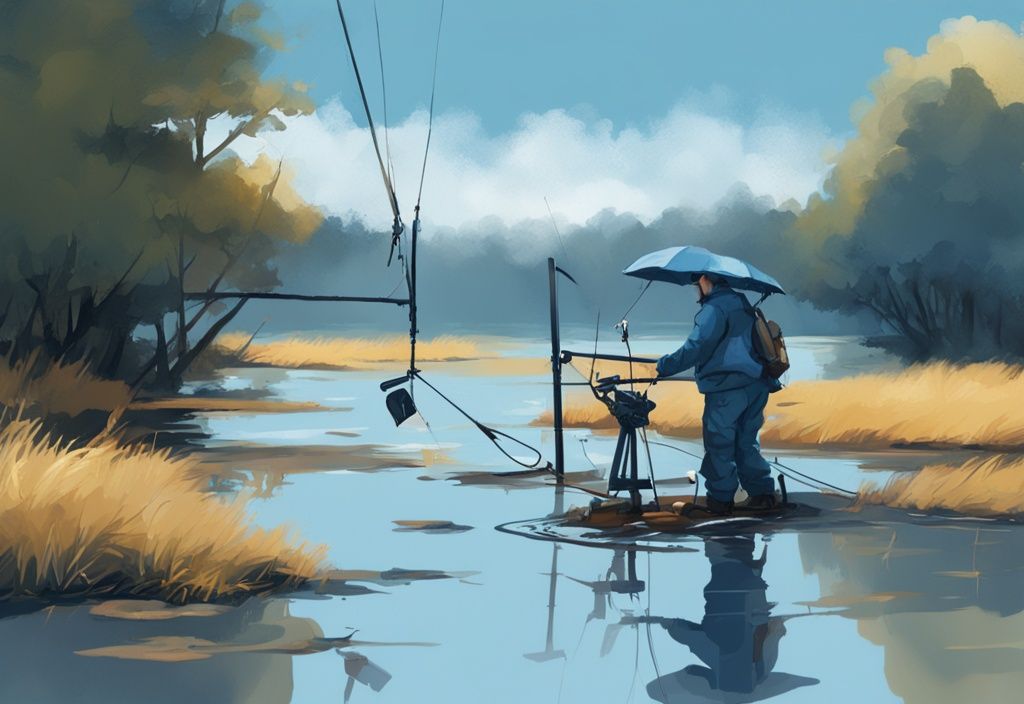
When it rains, the action intensifies. Rain stirs up sediments, dislodging hidden prey and making them more accessible to hungry fish. As an angler, you’re stepping into a dynamic ecosystem where every cast could bring in a thrilling catch. These rocky areas transform into lively, post-rain hubs that can turn an ordinary fishing trip into a memorable adventure.
Pros of Fishing in Deep, Muddy Areas
Deep, muddy areas offer a distinct advantage for fishing after rain that shouldn’t be overlooked. While shallow waters may take a while to clear, the deeper zones stabilize much more quickly. The mud and sediment suspended in these waters create a nutrient-rich environment, attracting a diverse array of fish keen on the new feeding options.
The consistency you’ll find in these deep, muddy areas is remarkable. Fish tend to gather in these nutrient-dense waters, giving you a prime target zone. For an angler, this is gold – the kind of reliable, post-rain fishing action you’d be hard-pressed to find elsewhere. So next time the skies open up, you know exactly where to head for some of the best fishing experiences. Happy casting!
Targeting Specific Fish Species Post-Rain
Fishing after rain provides unique opportunities for anglers due to the behavioral changes in fish. Understanding how various species react to these conditions can help you maximize your success and enjoy the thrill of the catch.
Fishing for Bass After Rain
Bass fishing after rain can be incredibly rewarding thanks to the increased activity of these predatory fish. Rainfall causes an influx of fresh water into their habitats, often bringing food sources like insects and smaller fish with it. Bass are known to be highly responsive to such changes, making them more active and aggressive in their feeding.
To capitalize on this heightened activity, focus on using lures that mimic the appearance and movement of prey disturbed by the rain. Soft plastics and crankbaits are particularly effective in these conditions. These lures not only attract bass but also trigger their natural predatory instincts.
Shallow waters are prime locations for post-rain bass fishing. The fresh inflows created by the rain bring cooler temperatures and an abundance of food to these areas, making them attractive hunting grounds for bass. Additionally, areas with ample cover such as submerged vegetation, fallen trees, and rock formations are where bass are likely to concentrate after a rain shower. This cover provides them with both protection and excellent ambush spots to catch prey.
Fishing for Catfish After Rain
Catfish are another species that exhibit increased feeding activity following a rain event. The runoff from rain tends to bring a variety of food sources into the water, like worms and other small organisms, which catfish eagerly consume. The abundance of organic material washes into the water, creating a great feeding opportunity for these bottom-dwellers.
Live bait is highly effective for catfishing after rain. Using worms and other baits that mimic naturally washed-in prey can significantly enhance your chances of a catch. Catfish are drawn to these baits due to their movement and scent, which they detect with their sensitive barbels.
When targeting catfish after rain, it’s important to fish in areas with less current and more stable water conditions. These spots are often quieter and more comfortable for catfish, which prefer slower-moving waters. Look for spots where the water flow is moderate and the environment is relatively undisturbed, providing an ideal setting for catfish to hunt and feed post-rain.
Navigating these strategies allows anglers to effectively target bass and catfish after rain, utilizing the specific behaviors and preferences of each species to their advantage. With the right approach, fishing after rain transforms into a highly productive and enjoyable experience.
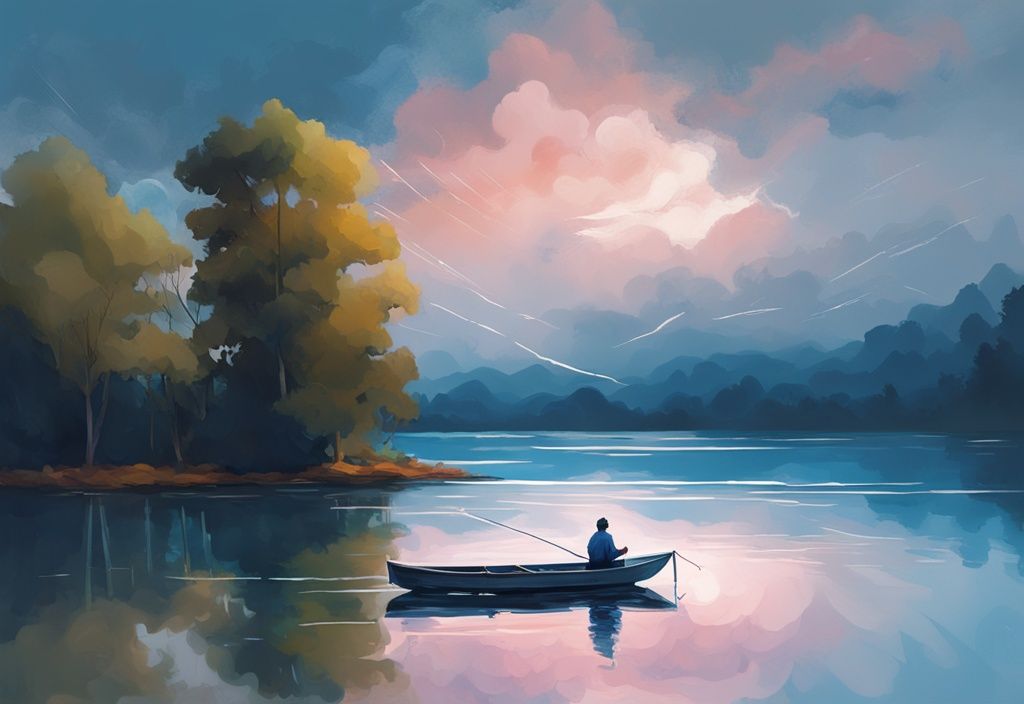
Pros and Cons of Fishing After Rain
The Bright Side of Rainy Fishing
Fishing after rain can offer a host of advantages for avid anglers. One of the biggest perks is the surge in fish activity and feeding opportunities. After a rain, fish tend to get more lively, popping out of their shelters to take advantage of the sudden influx of food. Rain often washes insects and worms into the water, providing a buffet of live bait that can whip fish into a feeding frenzy.
Then there’s the welcome cooling effect that comes with post-rain temperatures. This can be a blessing, especially during hot weather. Fish are more likely to become active in cooler conditions, and as an angler, you’ll find the experience much more pleasant. Let’s not forget the benefit of reduced crowds— quite a few anglers prefer to stay dry, so you’ll likely have the fishing spots mostly to yourself. Less competition means a more tranquil, rewarding outing.
Challenges of Fishing Post-Rain
However, fishing after rain isn’t all smooth sailing. One of the main challenges you’ll face is murky water caused by stirred-up silt and debris, which can make fish more wary and tricky to lure. Also, changing currents and water levels can disrupt your usual fishing spots, demanding quick thinking and adaptability.
And let’s not ignore the unpredictable weather. Lightning and fast-moving water are serious hazards, so you’ll need to exercise extra caution. Navigating slippery banks and unstable ground can turn into quite the obstacle course. Prioritizing safety is crucial to avoid accidents. These challenges highlight the importance of being well-prepared and adaptable when fishing after rain.
Staying Safe While Fishing After Rain
Fishing after rain has its unique challenges and rewards, but safety should always be a top priority. Here’s what you need to know to make your rainy fishing adventures both exciting and secure.
Your Gear Checklist for Rainy Fishing
When planning to fish after rain, equipping yourself properly is crucial for safety and success. Always wear non-slip shoes that can handle slippery surfaces and prevent falls. I’ve learned the hard way that a first aid kit is indispensable; it’s your quick fix for minor injuries or emergencies. Reliable communication methods like mobile phones and radios are essential to stay connected. You don’t want to be caught off guard, so check weather forecasts to anticipate sudden changes and ensure a safer fishing experience.
Navigating Weather Conditions
Fishing after rain requires heightened awareness of potential weather-related hazards. Lightning is a significant danger; if you see or hear a storm approaching, seek shelter immediately and avoid being on or near water. Fast-moving water poses another risk, as it can quickly change currents and make areas unsafe. Slippery banks can lead to falls, so tread carefully and consider using a wading staff for stability. Prioritize safety by avoiding fishing during storms or under extreme conditions, and opt for sheltered fishing spots to mitigate risks associated with flooding and unstable terrains.
FAQ
Is Fishing After Rain Safe?
Absolutely, fishing after rain can be quite safe if you take the right precautions. Always check the weather forecasts to avoid any hazardous conditions. Equip yourself with the appropriate safety gear, and stay alert for lightning and slippery surfaces. Your focus should always be on ensuring a safe and enjoyable fishing experience.
The Ideal Wait Time to Fish After Heavy Rain
Patience is key here. Ideally, you should wait for water levels and clarity to stabilize, which might take anywhere from a few hours to a day. For rivers and creeks, waiting until the water speed slows down and the muddiness decreases can yield better results. Lakes and ponds usually settle much quicker, offering you earlier fishing opportunities.
The Best Time of Day to Fish After Rain
Early morning and late evening are typically the golden hours for fishing after rain. These times align with lower light levels, which fish prefer for feeding. You’ll find them more active and easier to catch during these periods. So set your alarm early or plan a late evening trip to make the most of these prime times.
Can Beginners Successfully Fish After Rain?
Yes, indeed. Beginners can absolutely have successful fishing trips after rain by following some basic tips. Using natural baits and targeting productive spots like shorelines and runoffs can significantly boost your chances. Learning to adapt to the changing conditions while prioritizing safety will not only enhance your fishing experience but also build your confidence over time.
Conclusion
Fishing after rain opens the door to unique opportunities and challenges for anglers. When it rains, fish become more active, searching for food and moving to different areas, which can make for a more fruitful fishing experience. However, targeting these active fish requires understanding the various changes in their environment influenced by rain.
Being aware of factors like water temperature, oxygen levels, and visibility can dramatically improve your fishing outcomes. For example, rain often leads to cooler water temperatures, making fish like bass more active in shallow areas. Enhanced oxygen levels from rain can also boost fish activity, particularly in species with high energy requirements such as bass and mackerel. Additionally, cloud cover resulting from rain reduces light penetration in the water, making fish feel more secure and likely to venture out for food.
One critical element to successful fishing after rain is adapting your techniques to the conditions. Anglers should consider using natural baits that mimic washed-in prey, such as live worms or insects. Similarly, adjusting lure types to reflect the changed environment—like using crankbaits and soft plastics—can be highly effective. It’s also beneficial to focus on specific post-rain hotspot areas such as shorelines, runoff points, and shaded spots.
Equally important is ensuring safety. Slippery banks, fast-moving water, and potential for sudden weather changes necessitate careful preparation. Proper rain gear, non-slip shoes, and checking weather forecasts are essential steps for any post-rain fishing trip. Always prioritize safety, avoiding fishing during severe weather or in unstable conditions.
Ultimately, fishing after rain can be highly rewarding if approached with the right knowledge and preparation. By understanding the effects of rain on fish behavior and environment, and by adapting techniques accordingly, anglers can capitalize on the increased fish activity post-rain. Always stay adaptable and prioritize safety to maximize your fishing experience in changing conditions.
